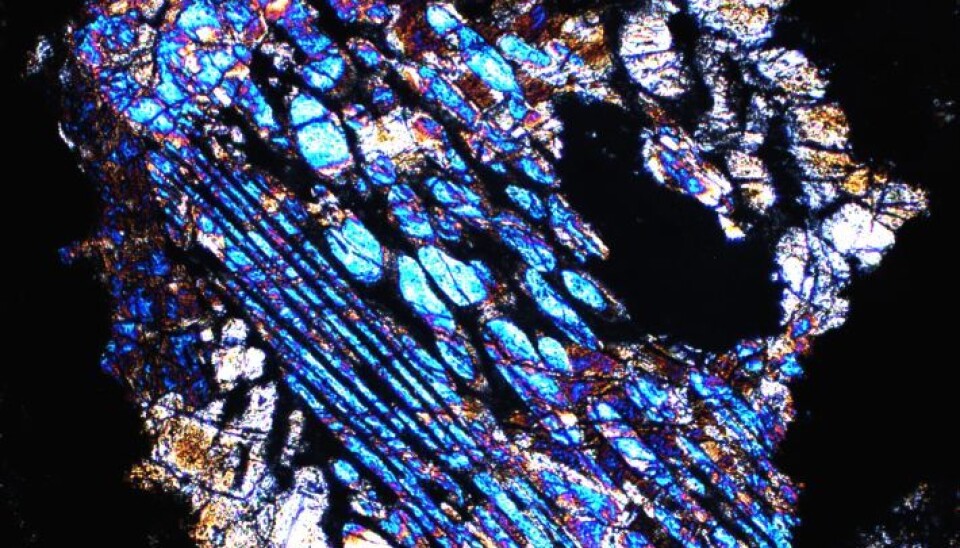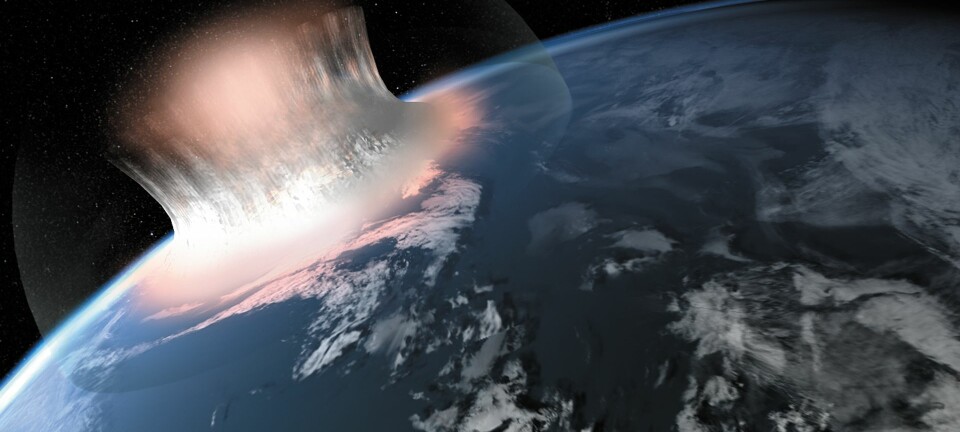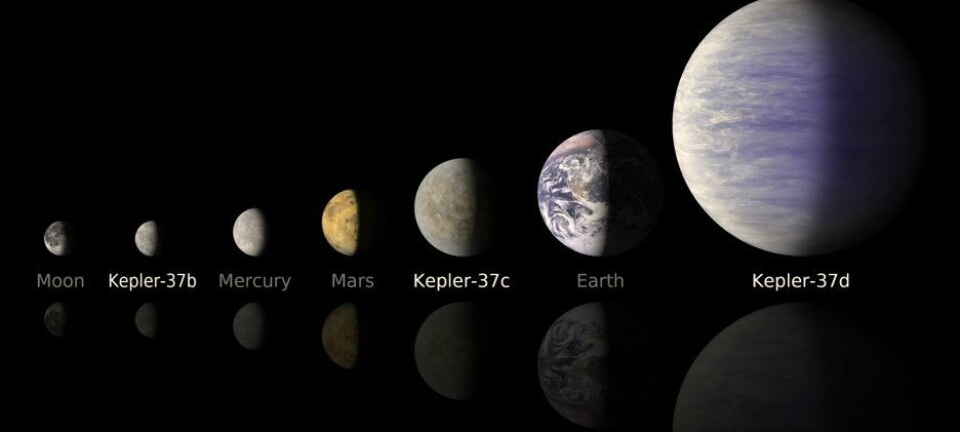
New theory: Planets formed from tiny glass beads
The Solar System was once full of small glassy spheres which were the basis for the formation of rocky planets, suggests new theory.
Astrophysicists are working hard to find out how our Solar System was formed. How did a disc of gas and dust become the heavenly bodies we find in the Solar System: planets, moons, and asteroids?
Four astronomers have now brought science one step closer to answering this enigma.
With the help of a computer model they have explained how huge asteroids, and ultimately planets like Earth, may have been formed.
The point of origin turns out to have been chondrules which are glassy pearls only a millimetre across. They are typically found in meteorites.
Meteorites have masses of chondrules
"When you look at the kind of meteorite known as a chondrite, you can see that it consists of 80 to 90 per cent chondrules. So it appears that chondrules are a crucial part of objects that were formed in the early history of the Solar System – before the formation of rocky planets," says co-author Martin Bizzarro from Starplan, a centre at the Natural History Museum of Denmark, University of Copenhagen.
"But nobody has really investigated how these chondrules came together. We’ve previously discovered that chondrules in the same meteorite can be of entirely different ages so now we want to find out how they got together and look at the role chondrules may have played in the formation of our Solar System," he says.
The computer models shows that chondrules in the disc of gas and dust found around the Sun in the early solar system, may have enabled objects known as planetesimals to grow so large that they became proto planets, which later become planets.
Layers of chondrules created proto-planets
The dust first gathered in clumps only centimetres in size, but because they were slowed down by the gas in the disc they drifted inward towards the Sun. An earlier computer model, which was developed by study co-author Anders Johansen, University of Lund, showed, however, that they could have managed to grow as big as 50 kilometres across in just a few hundred years.
The problem has been to explain how these planetesimals could grow even larger during the first few million years of the Solar System's history. This is where the tiny chondrules come into play. The planetesimals, several kilometres across, simply gathered up the chondrules they collided with in their orbit around the Sun.
They gathered layer on layer of chondrules and we have shown that in this way a protoplanet the size of Mars could be formed in two-three million years.
"After that there were no chondrules left. Then the planets grew as a result of the collisions between protoplanets planetesimals. We believe, for instance, the Earth and Moon were created by the collision between two proto planets," says Andersen.
All traces of the chondrules disappeared in the collisions. The only meteorites found today are those stemming from objects which were not involved in major collisions.
"A possible model" of reality in the asteroid belt
Liv Hornekær, who is an assistant professor at the Department of Physics and Astronomy at Aarhus University, has read the scientific article which has been published in the journal Science Advances.
"That's certainly one possible model for the formation of the rocky planets. It would appear that in a reasonably short time they're able to reach the size of the planets we see today," she says.
The new model builds on an existing one, Hornekær explains. "So we're getting closer to something resembling reality – especially the way it looks in the asteroid belt.
"You might say that the scientists have fine-tuned and tested the model by comparing it with what the asteroids look like in the asteroid belt," she says. "Then they looked at what significance the model has for the formation of rocky planets further into the Solar System, and find out that the model actually delivers a convincing mechanism for the formation of planets like Mars and the Earth."
Many questions left to be answered
A number of mysteries remain to be clarified if we want to gain full understanding of how planetary systems like our own can come into being. It isn't clear, for example, how chondrules are formed in the first place.
It takes heat to melt dust particles, so when they resolidify they become the glassy chondrules we are finding today in meteorites. The question is what melted them – was it shock waves in the dust cloud around the young Sun or was another mechanism at play?
"The chondrules was certainly there and they must’ve played an important role. They may have done the same thing in other stellar systems and we have discovered masses of planets orbiting other stars. The formation of chondrules must be a natural part of the development of planetary systems so we must find out how it happens," says Bizzarro.
--------------
Read the original story in Danish on Videnskab.dk
Translated by: Hugh Matthews









